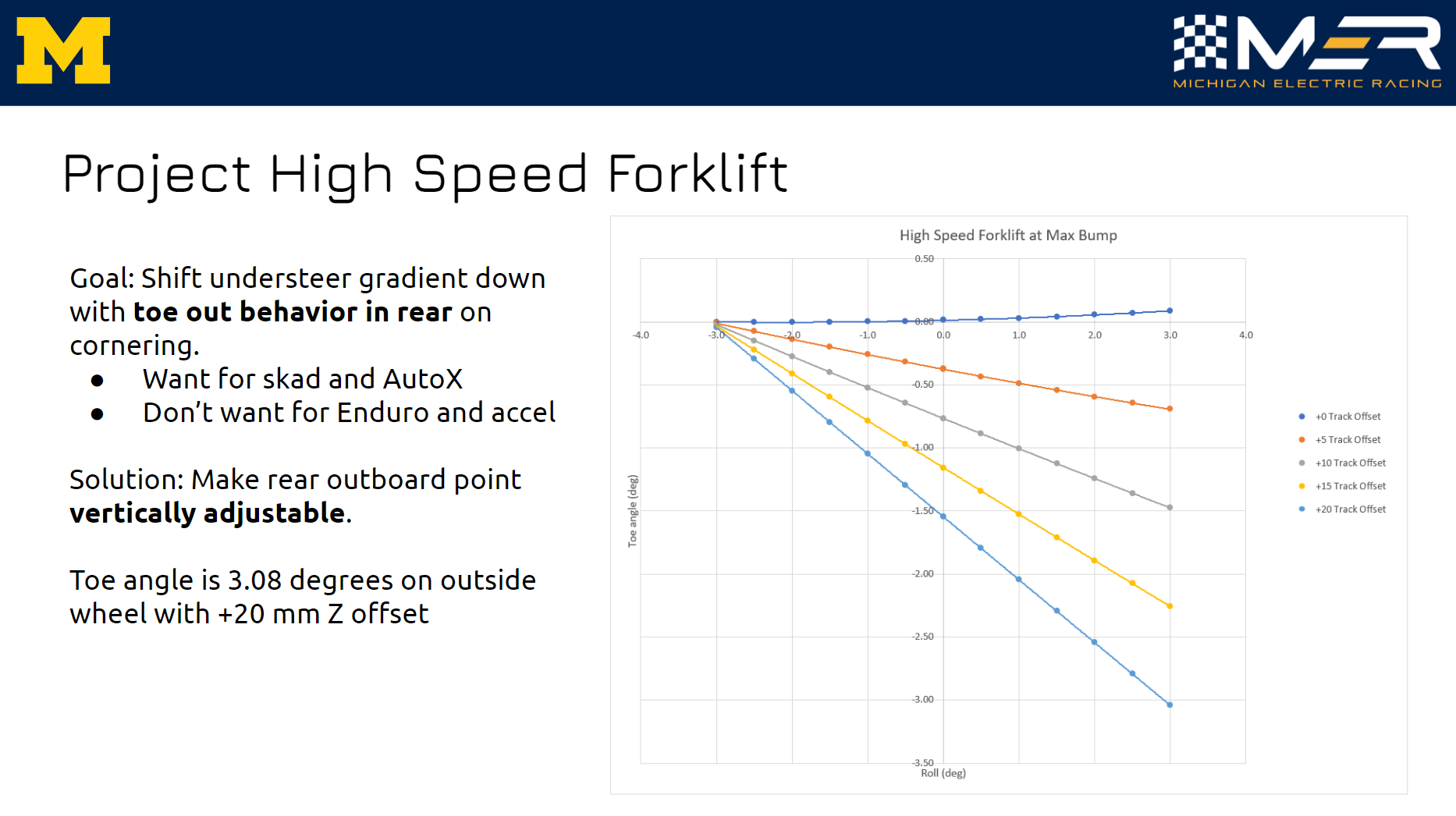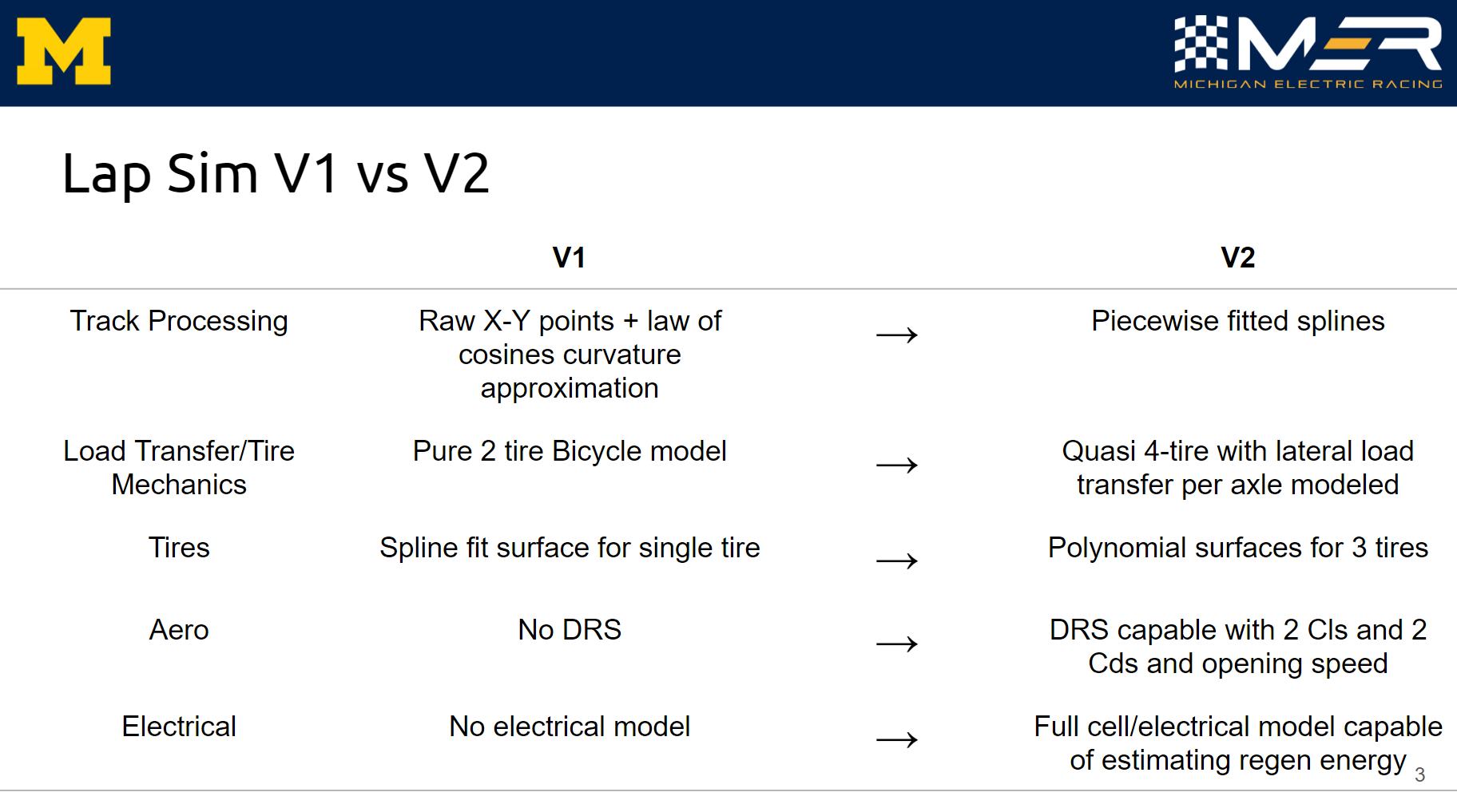MER20
MER20
MER20 was Michigan Electric Racing’s second vehicle, designed for the 2019-2020 season. Unfortunately it was not completed for competition due to the COVID-19 pandemic. This vehicle followed a largely similar build schedule to MER19, beginning in the summer of 2019 with manufacturing planned to conclude in late March 2020.
The vehicle’s main improvements included greatly reduced overall vehicle mass, and a focus on vehicle dynamics and aerodynamics. The team also designed and manufactured custom motor controllers, two of which would have been installed in this vehicle. Overall system voltage was increased to 400V, and the battery capacity was increased to roughly 8kWh with minimal mass penalty due to a switch to Sony VTC6 cells from Samsung cells. New planetary gearboxes were designed with a 4:1 ratio, providing significant mass savings over the MER19 gearboxes.
MER20 was finished as MER21 and took first place at FSAE Michigan in 2021.
Suspension
While I had no formal role on Michigan Electric Racing for MER20, I contributed significantly to the design of the suspension system and vehicle dynamics of the car as a whole:





Conducted initial packaging study to estimate CG location with new driver and battery pack positions
Analyzed TTC tire data to select tires and drive the decision to run a split fitment with Hoosier 18.0x7.5-10 R25B tires in the rear and Hoosier 18.0x6.0-10 tires in the front
Estimated vehicle performance targets using tire data and planned vehicle mass and dimensions
Generated the first few versions of suspension kinematics in NX
Created pitch calculator to determine anti-dive/anti-squat percentages, and benefits of added pitch stiffness
Created roll calculator to determine roll gradient, ARB stiffness, and roll distribution
Created load transfer worksheet and load cascade to provide maximum steady state loading conditions to provide to design and FEA teams
Provided aerodynamics team with mass and center of pressure targets, and ride height and other clearances
Simulation
I also led a small team working to improve the overall vehicle model and lap simulation tool. Some excerpts from a summary presentation are shown below:
Improved tire data processing to more accurately model tire performance in the simulation
Updated existing bicycle model to a “quasi 4-tire” model - which includes load transfer effects in overall axle traction capacity.
Integrated OCV-R-RC cell model scaled to pack size to determine amount of power and energy used throughout an event. Thermal effects (2-node, center and surface of cell) also included. This was not fed back into the vehicle dynamics model, but instead run afterwards using output from the original simulation.
Improved both data input and output - an easy to fill out excel sheet of different vehicle configurations could now be imported, and additional variables were added to the output (ex: max tractive force available vs. tractive force used).
Added torque vectoring functionality.





